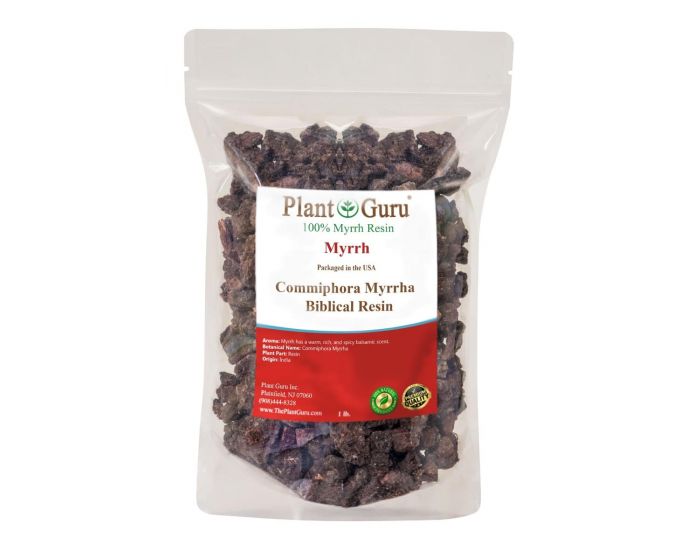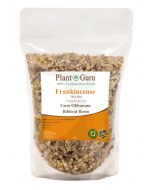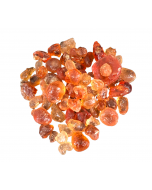Myrrh Resin
Habitat: Native to Ethiopia, Somalia, the eastern Mediterranean, and the Arabian Peninsula. This tree prefers desert regions.
Plant Description: Myrrh is a shrub-like tree that reaches only about nine feet in height. This tree has a thick, light gray trunk with sharp spines protruding from its main branches.
The serrated-edged leaves grow in groups of three consisting of two small, oval leaves and one larger leaf.
Yellowish-red flowers hang in elongated, branching clusters, accompanied by small brown oval fruits.
Plant Parts Used: It is the bitter tasting rubber sap that is used as herbal medicine.
The sap secretes naturally from the bark of the tree and becomes a resin (Myrrh) when it solidifies.
The resin can be distilled to extract an essential oil, pulverized into a powder which can be used in tablets and capsules, or dissolved in ethanol to make a tincture.
The resin is mainly harvested from wild trees in Africa and the Arabian Peninsula. Myrrh resin forms irregular pieces varying in size and color. They are translucent and sometimes covered by a layer of white powder. The color can be white brown, greenish, brownish yellow, reddish yellow, reddish-brown or brown-black.
Therapeutic Uses, Claims and Benefits of Myrrh
Myrrh is traditionally used as burned incense which repels fleas and mosquitoes.
Thought to be effective for pain relief, including menstrual pain resulting from blood stagnation.
Powdered myrrh is used in Germany to treat throat and mouth inflammation.
It is also used on external injuries to reduce swelling. Applied directly to teeth, it can also help ease the pain of a toothache.



